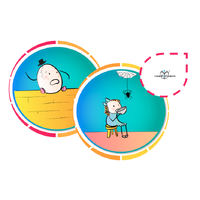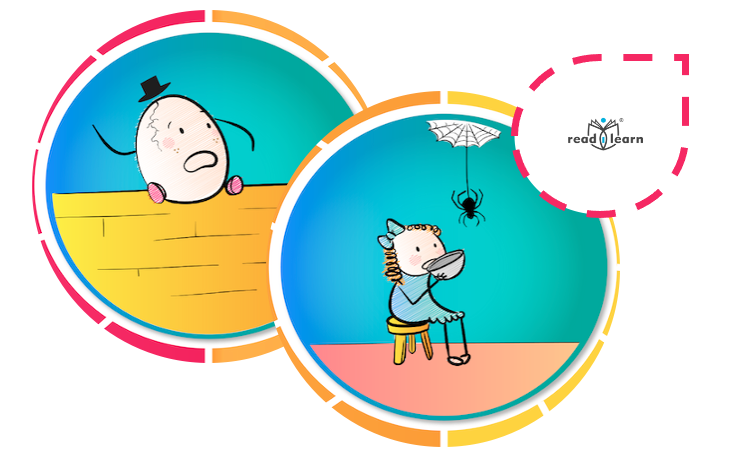Guest Blog: Developing thinking and language skills with nursery rhymes
Author: Norah Colvin - Founder of readilearn Date Posted:11 October 2022

Nursery rhymes are not just for babies and pre-schoolers. Nursery rhymes can be used in early childhood classrooms to generate discussion, stimulate imaginations...
By Norah Colvin - founder of readilearn and collaborator on itc thinkdrive.
We are excited to announce a new addition to our website, the Guest Blog Spot! Keep an eye out for blog posts from incredible education experts like today's author, Norah Colvin of readilearn! Norah is the founder and director of readilearn - a fantastic digital collection of informative, creative, and engaging learning resources for early years teachers. Norah has years of experience as a teacher herself and has built her business to empower the future generation to become life-long learners.
Nursery rhymes are not just for babies and pre-schoolers. Nursery rhymes can be used in early childhood classrooms to generate discussion, stimulate imaginations, encourage creative thinking, and inspire writing. Activities suggested in this article support learning in the English curriculum and the Critical and Creative Thinking General capabilities of the Australian Curriculum.
Many children come to school with some knowledge of nursery rhymes. If they don’t, the rhymes are short and easy to teach and, as they form part of our rich literary heritage, it is beneficial for children to at least be aware of some. Learning nursery rhymes also helps children develop a sense of the rhythms and sounds of our English language.
In discussions about the rhymes, children learn to ask questions, give opinions, listen attentively and respectfully, consider possibilities, and generate new ideas in imaginative and creative ways. The discussions are also a great basis upon which children can use their ideas to recreate their own versions of the rhymes and stories orally or in written text.
The first step is always ensuring children know the rhyme before proceeding. As many of the rhymes tell only a skeleton of a story, children can be encouraged to ask questions about the missing information, suggest details to fill out the backstory, and even suggest alternate characters, events and endings.
You may need to model how to wonder and ask questions about the rhyme, how to listen actively and respectfully, and how to accept suggestions without evaluation or criticism. The idea is for children to generate as many questions as possible and suggest as many alternatives, no matter how outlandish, as they can. Questions are asked and recorded prior to any responses or alternatives being suggested.
The discussions can lead to oral or written storytelling. When stories are written it is important for children to have an opportunity to share their stories with others, whether that be with a partner, a small group or the whole class.
Humpty Dumpty
In one lesson, children could generate questions about the wall, for example:
- Where was the wall?
- What kind of wall was it?
- What sort of walls can you sit on?
- Why did Humpty sit on the wall?
- Was he on his own or with someone?
The ideas that children suggest in response to the questions can be used to tell or write the beginning of their own story. You could consider allowing the children to write independently or write a story collaboratively first to model the process.
In the next lesson, children could generate questions about the fall; considering possibilities about why Humpty may have fallen and what happened when he fell. After rereading the first part of their story, they write this next exciting section of their story.
Next, children generate questions about Humpty’s injuries and why he couldn’t be repaired. Is that what they want to have happen in their story? They consider alternate resolutions to the problem and how he might be repaired if that’s what they decide. They discuss possibilities and write their own resolution.
Little Miss Muffet
As with Humpty Dumpty, children could generate questions about the rhyme, for example:
- Who was little Miss Muffet?
- What is a tuffet?
- Why did she sit on the tuffet?
- Did the spider want to frighten her away?
- Why did the spider sit beside her?
- What did Miss Muffet do when she ran away?
- How did the spider feel?
Children could generate ideas about other story characters and events and write their own versions.
Little Jack Horner follows a similar structure to Little Miss Muffet. Comparing the rhymes provides children with another opportunity to explore the structure of nursery rhymes and consider story possibilities.
Hey Diddle, Diddle
There are many ways to explore and encourage learning with Hey Diddle Diddle.
You could begin by asking children to suggest words that rhyme with diddle, for example: griddle, middle, piddle, riddle, twiddle.
The children can then use these rhymes to generate new substitute lines, for example:
The cat told a riddle.
Cat had a fat middle.
Cat cooked on a griddle.
(I’ll leave piddle up to the children.)
‘Over the moon’ means to be excited about something. How else could we say that the cow was excited? Ask the children to think about what they do when they’re excited and then substitute those actions, no matter how crazy (sometimes, the funnier the better), to tell what the cow did, for example:
- jumped up and down
- clapped her hands
- squealed out loud
- set off the fireworks.
Invite children to suggest why the cow might be excited. List the suggestions and discuss the scenarios. Children may like to write a story about reasons for the cow’s excitement, for example:
- first cow in space
- is going to have a calf
- doesn’t have to be milked any more
- mean boy swaps cow for beans to a kind farmer (Jack and the Beanstalk)
- the cow’s holiday (The cow went over the mountain)
- the cow has a new electric blanket to keep her warm (Click, Clack, Moo Cows That Type).
Children could also suggest other things the cow may have done, for example:
- The cow tiptoed across quicksand.
- The cow fell into a block of cheese.
- The cow sat on a hedgehog.
As was suggested for Humpty Dumpty, you could consider encouraging children to write independently or model the process by writing a story collaboratively.
Row, Row, Row Your Boat
Children could generate questions about the rhyme, for example:
- What sort of a boat is it?
- Where are they going?
- Why?
- What will they do when they get there?
- Why are they happy?
- How else could they feel?
Children could suggest alternate versions of the rhyme using different modes of transport and different actions to propel them. It is fun to write alternative versions collaboratively as a class, and you could sing versions as they are suggested. Once children have the idea of changes that can be made, they will enjoy writing their own versions.
World Nursery Rhyme Week from 14 – 18 November is a perfect time for encouraging children’s thinking and imaginations with nursery rhymes, but there’s no better time than now to encourage thinking and writing.
More detailed lesson ideas for these nursery rhymes are available free as part of your subscription to thinkdrive or for a small fee on readilearn.

